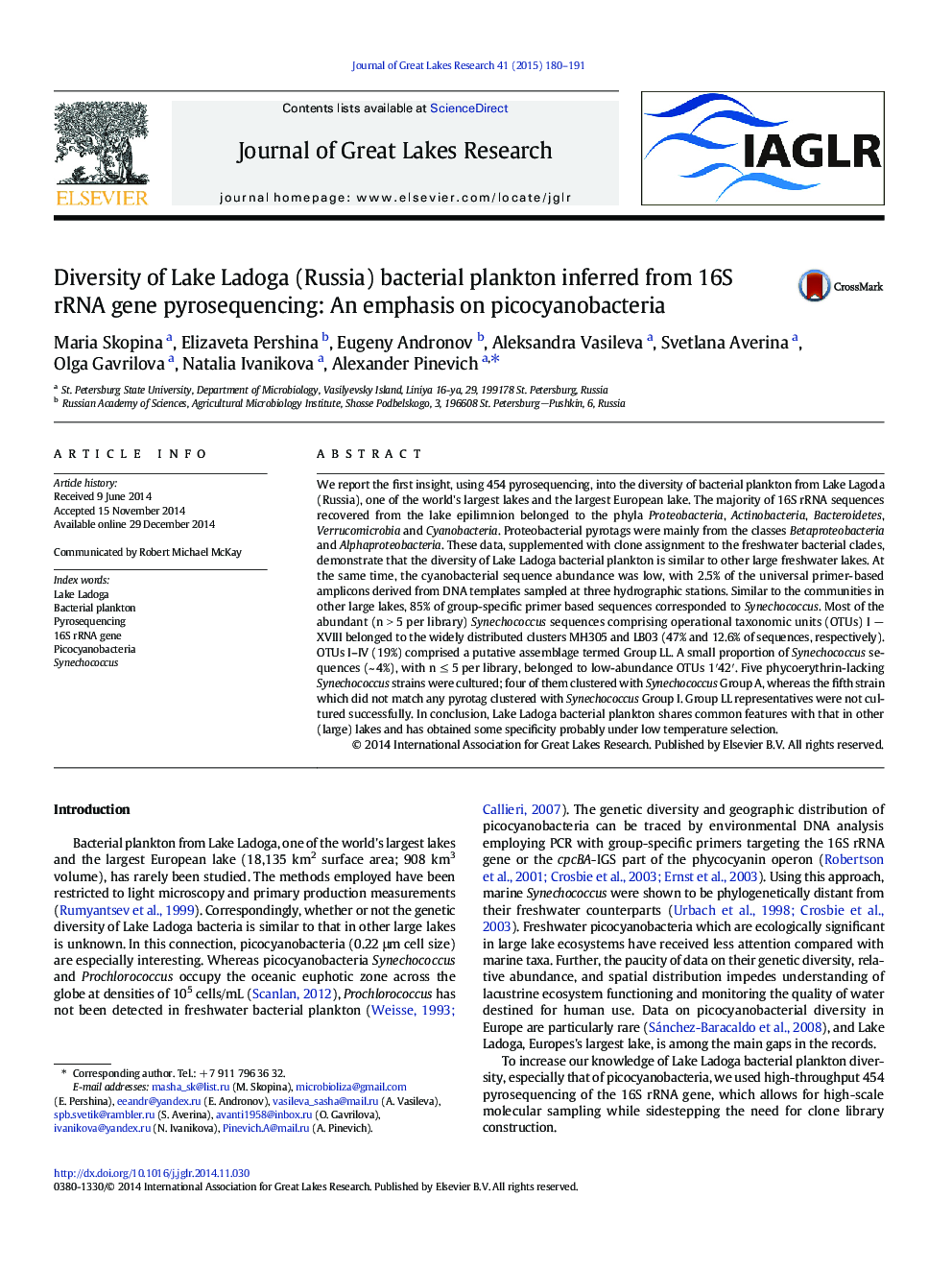| کد مقاله | کد نشریه | سال انتشار | مقاله انگلیسی | نسخه تمام متن |
|---|---|---|---|---|
| 6305161 | 1306682 | 2015 | 12 صفحه PDF | دانلود رایگان |
عنوان انگلیسی مقاله ISI
Diversity of Lake Ladoga (Russia) bacterial plankton inferred from 16S rRNA gene pyrosequencing: An emphasis on picocyanobacteria
دانلود مقاله + سفارش ترجمه
دانلود مقاله ISI انگلیسی
رایگان برای ایرانیان
کلمات کلیدی
موضوعات مرتبط
مهندسی و علوم پایه
علوم زمین و سیارات
علوم زمین و سیاره ای (عمومی)
پیش نمایش صفحه اول مقاله

چکیده انگلیسی
We report the first insight, using 454 pyrosequencing, into the diversity of bacterial plankton from Lake Lagoda (Russia), one of the world's largest lakes and the largest European lake. The majority of 16S rRNA sequences recovered from the lake epilimnion belonged to the phyla Proteobacteria, Actinobacteria, Bacteroidetes, Verrucomicrobia and Cyanobacteria. Proteobacterial pyrotags were mainly from the classes Betaproteobacteria and Alphaproteobacteria. These data, supplemented with clone assignment to the freshwater bacterial clades, demonstrate that the diversity of Lake Ladoga bacterial plankton is similar to other large freshwater lakes. At the same time, the cyanobacterial sequence abundance was low, with 2.5% of the universal primer-based amplicons derived from DNA templates sampled at three hydrographic stations. Similar to the communities in other large lakes, 85% of group-specific primer based sequences corresponded to Synechococcus. Most of the abundant (n > 5 per library) Synechococcus sequences comprising operational taxonomic units (OTUs) I â XVIII belonged to the widely distributed clusters MH305 and LB03 (47% and 12.6% of sequences, respectively). OTUs I-IV (19%) comprised a putative assemblage termed Group LL. A small proportion of Synechococcus sequences (~ 4%), with n â¤Â 5 per library, belonged to low-abundance OTUs 1â²42â². Five phycoerythrin-lacking Synechococcus strains were cultured; four of them clustered with Synechococcus Group A, whereas the fifth strain which did not match any pyrotag clustered with Synechococcus Group I. Group LL representatives were not cultured successfully. In conclusion, Lake Ladoga bacterial plankton shares common features with that in other (large) lakes and has obtained some specificity probably under low temperature selection.
ناشر
Database: Elsevier - ScienceDirect (ساینس دایرکت)
Journal: Journal of Great Lakes Research - Volume 41, Issue 1, March 2015, Pages 180-191
Journal: Journal of Great Lakes Research - Volume 41, Issue 1, March 2015, Pages 180-191
نویسندگان
Maria Skopina, Elizaveta Pershina, Eugeny Andronov, Aleksandra Vasileva, Svetlana Averina, Olga Gavrilova, Natalia Ivanikova, Alexander Pinevich,